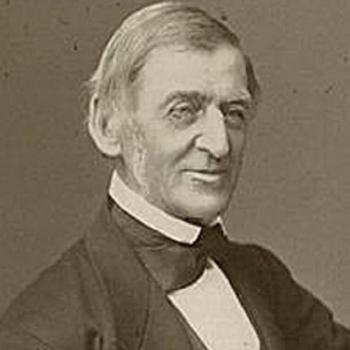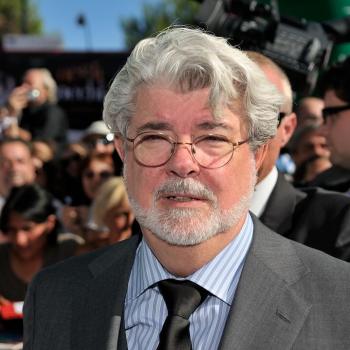
Named Malcolm Little by his parents in 1925, Malcolm X became one of the most prominent militant black nationalist leaders in the United States. He was a spokesperson for the Nation of Islam and founder of both the Muslim Mosque, Inc., and the Organization of Afro-American Unity. Malcolm X was assassinated in 1965.
What do names tell us about people? Ask students to write about the origin of their own names in their journals. How did they come to be named? Who made the decision about their official names? What nicknames do they have? What names do they like or dislike and why? If they could pick out their own names, what would they select?
After students have had time to reflect and write on this topic, explore the names Malcolm X used during his lifetime: Malcolm Little, Detroit Red, Malcolm X, el-Hajj Malik el-Shabazz, and Omowale. Students may have an easier time understanding Malcolm X's switches if they consider Esperanza's desire to change her name in Sandra Cisneros's House on Mango Street. Share this excerpt with students, and then hold a class discussion about the different names Malcolm X used during his life. Next to each name, ask the class to brainstorm adjectives that might be used to describe Malcolm X during that period in his life.
Links at this site provide resources about Malcolm X and his life. Included are an audio archive of his speeches, photographs, a timeline, links to related Internet resources, and more.
This site from Columbia University includes new research and multimedia materials about Malcolm X. Research for an upcoming biography about Malcolm X is included in the site, as well as numerous digital interviews with people who knew him.
This Encyclopaedia Britannica entry on Malcolm X includes biographical information, as well as suggestions for further reading and links to other people and places related to black history.
This historical article, from the New York Times Learning Network, discusses an interview with Malcolm X, given the week before he was killed by assassins identified as Black Muslims.

In 1971, National Public Radio (NPR) began the first commercial-free, live radio broadcasts. Financed by the Corporation for Public Broadcasting and listener contributions, NPR offers news, music, and other programs free to the public through more than 860 public radio stations. More than 26 million listeners tune in to over 130 hours of original NPR programming each week, including programs produced by local stations and other radio networks.
National Public Radio's commercial-free programming is largely financed by listener contributions. By not relying on advertising revenues, NPR and other public radio stations are able to produce programs that differ from those of commercial radio stations.
List some of the programs offered by a local NPR station (e.g., Fresh Air, All Things Considered, Morning Edition, or Living on Earth). Ask students to make some predictions about the content of each program based upon the program's title. Divide students into groups and instruct each group to listen to one of these programs once or more during the course of a week and report on its contents to the class. Discussions that might follow such reporting could include questions such as:
- What did you learn as a result of listening to this show?
- Is this a program that might be of interest to someone your age? Why or why not?
- How might this program be different if it aired on a commercial radio station?
On the NPR website, students can listen to archived broadcasts of NPR programs. There are links to NPR programming such as Car Talk and Latino USA, as well as an audio search feature that enables listeners to search for a story that they have heard on the radio.
This collaboration between NPR and the National Geographic Society produces and broadcasts stories on the natural world and threatened environments, diverse cultures, adventure, and exploration and discovery.
This companion website to NPR's Radio Diaries includes archived audio files and transcripts. The site features information on how students can create their own radio diaries.
This page from the NPR site offers stories about education topics from a variety of NPR shows.

Ice cream has been around since long before 1786. Emperor Nero of Rome had his slaves get snow from mountains then had it mixed with nectar, fruit pulp, and honey. Marco Polo brought recipes for water ices to Europe from the Far East. Ice cream first appeared in Italy when it was discovered that ice and salt could cause freezing.
During the warm month of June in the northern hemisphere, the topic of ice cream can be quite refreshing. The weather was probably hot in 1786 when Mr. Hall of 76 Chatham Street advertised the first commercially made ice cream. How has advertising changed over the years? Find some advertisements in newspapers, magazines, or on the Internet, or share these vintage ice cream advertisements. Evaluate the ads you have chosen with the ReadWriteThink Advertisement Dissection and Analysis printable activity sheet.
Invite students to think of a new flavor of ice cream and create an advertisement for their product. They can create an advertisement for television, radio, magazine, newspaper or the Internet. Students can add music to their ads or create a short video. After all the advertisements are completed, students can present them to a neighboring class who will vote on the most convincing ad. The winner can choose the flavor for a class ice cream party.
Extend students' learning by sharing this activity with their families or afterschool providers. The activity reinforces procedural writing by having students write a recipe for an ice cream sundae.
This site from PBS Kids Go! encourages young people to think critically about media and become smart consumers. Activities on the site are designed to provide users with some of the skills and knowledge needed to question, analyze, interpret, and evaluate media messages.

Ralph Waldo Emerson- essayist, poet, and lecturer-was born in Boston in 1803. A founding figure of transcendentalism, Emerson believed that we need to trust ourselves and to live in harmony with nature. His influence on the major figures in American literature, such as Thoreau, Whitman, and Hawthorne, cannot be overstated. At Emerson's funeral in 1882, Whitman called him "a just man, poised on himself, all-loving, all-inclosing, and sane and clear as the sun."
Before sharing the quotation below, ask students to suggest definitions of success. Next, share this quotation which is often attributed to Emerson: "To laugh often and much, to win the respect of intelligent people and the affection of children, to earn the appreciation of honest critics and endure the betrayal of false friends, to appreciate beauty, to find the best in others, to leave the world a bit better, whether by a healthy child or a garden patch, or a redeemed social condition, to know that even one life has breathed easier because you have lived. This is to have succeeded."
Then, identify and list the definitions of success that the author puts forward. Next, ask students to name people they know (not celebrities or politicians) who seem to fit these definitions of a successful person. Last, using the Postcard Creator, have students write a note to a person on the list, explaining why they believe he or she is a success.
Note: There is some question as to whether the above quote in fact can be attributed to Emerson. This might make an interesting research question for students to explore and debate.
American Transcendentalism Web from Virginia Commonwealth University offers this page on Emerson. The Web contains hundreds of articles on Emerson and other transcendentalists.
Poets.org offers this page on Ralph Waldo Emerson. It includes biographical information, a selected bibliography, and links to selected writings and related Internet resources.
This resources from PBS includes a biography of Emerson, information about his role in the transcendentalist movement, and excerpts of his work.

Fred Rogers, better known as "Mister Rogers," began developing his ideas for children's programming in the 1950s. Mister Rogers' Neighborhood began in 1967; a year later, PBS began broadcasting the show. The last original Mister Rogers' Neighborhood aired in 2001, making it the longest-running PBS program at the time.
Ask students to think of movies, TV shows, and books they remember from their childhood. Encourage them to identify those from when they were very young. Ask students to choose an item from the list that they have not seen or read in a long time and to describe everything they remember-the plot, characters, and other elements as well as their associated feelings.
Next, ask students to revisit the item or to ask an adult about it. Students can respond by writing what they think about the text now that they are older: Do they still like it? What details did they remember? What did they NOT remember about it? Finally, ask students to explain whether they would share it with a child of their own or a younger sibling.
This is the official PBS website for Mister Rogers' Neighborhood. It includes many activities designed to stimulate the imagination.
NPR maintains this collection of articles about and interviews with Fred Rogers. It includes a special broadcast of his 30th anniversary show.
The Fred Rogers Company provides this page devoted to Rogers. Featured on the site are a biography, images, and a timeline of Rogers' life.
This site features lyrics and samples of the songs from the Grammy-winning Songs from the Neighborhood, a compilation of songs written by Fred Rogers and performed by 12 popular vocalists.
The beloved TV host on love, peace, and why you're special.

Since 1929, the Academy of Motion Picture Arts and Sciences, with over 6,000 members, has given awards for the best in film. The first ceremony, with 250 people in attendance, took place during a banquet held in the Hollywood Roosevelt Hotel. Tickets cost $10 and the entire ceremony is said to have taken less than an hour-a far cry from the four-hour, star-studded extravaganzas of today.
Students love to watch and talk about movies. With persuasion, they can even be convinced to write about movies. For younger and middle-grade students, you can ask them to make lists of their favorite and their least favorite movies. Looking over these lists, students can then brainstorm qualities that make a film good or bad. Examples might include acting, special effects, and humor. Ask them to rank these qualities from the most to least important and then to explain why the top three are the most important elements to look at in a film.
Next, have students apply these criteria to a film they have seen by writing a movie review that makes their critical stance clear. Older students can take this activity one step further by comparing their review to that of another critic. After reading through one or more reviews, students should write an answer to one of the critics, defending their own reviews and critical stance.
The official website of the Academy of Motion Picture Arts and Sciences, this site includes lists of the current year's nominees and winners. There is also information on previous years' ceremonies.
In 1998, the American Film Institute announced their list of the 100 greatest American movies of all time, and this updated version was created ten years later. This list can be compared to a list of past Oscar winners.
The British equivalent to the Oscar.com website, the BAFTA website includes information on categories, nominees, and winners.
This page from Lincoln City Libraries features a list of past winners of the Best Picture Oscar which are based upon novels, plays, and short stories.

As he was writing the script for the original Star Wars films in the 1970s, George Lucas spent a great deal of time reading and interviewing mythologist Joseph Campbell, whose ideas included a concept called "The Hero's Journey," the archetypal hero story that is found in cultures around the world. Lucas based much of his plot for the films on the stages of this journey, which, along with a relentlessly successful advertising campaign, might help explain the films' amazing popularity.
Use The Hero's Journey Interactive tool to describe how Luke Skywalker meets each stage of the journey:
- Call to Adventure
- Refusal of the Call
- Mentor Figure(s)/Supernatural Aid
- First Threshold
- Belly of the Whale
- Road of Trials
- Meeting with the Goddess/Temptress
- Atonement/Death of Mentor
- Apotheosis/Underworld
- Ultimate Boon
- Rescue from Without
- Crossing Back/Return
Then, brainstorm other works that use the formula, such as The Lord of the Rings.
This National Air and Space Museum exhibit highlights elements of myth and the Hero's Journey in the Star Wars films. Also included are image galleries and audio clips.
This post connects Star Wars and Campbell's Hero's Journey. References to the original films are included.
This page provides resources related to the series of books based on the Star Wars films.
Students can use this online tool to learn about the elements of the hero's journey, analyze a text that follows the hero's journey pattern, or start creating a hero story of their own.

Known as the "King of the Delta Blues," Robert Johnson was born May 8, 1911, in Hazelhurst, Mississippi. His legendary recordings of such blues standards as "Cross Road Blues" and "Sweet Home Chicago" have had an astounding influence on blues singers and rock musicians for generations. His amazing talent and mysterious death in 1938 sparked an old blues folk tale that he sold his soul to the Devil in exchange for his ability to play the guitar.
Having students write their own blues lyrics is a great way to teach rhythm, rhyme, and word choice. The most common form of the blues is referred to as the "12-bar blues" because of the twelve measures that are typical of the style. Share a blues song with your students before they begin to write, and distribute copies of the lyrics to a song with this structure. You may want to play a clip from Robert Johnson's "Cross Road Blues."
After looking at the lyrics, ask students to identify the structure used. They should be able to see that the lyrics of a 12-bar blues song often follow an AAB pattern. "A" refers to the first and second four-bar verses, and "B" is the third four-bar verse. In a 12-bar blues song, the first and second lines are repeated, and the third line is a response to them-often with a twist.
Next, brainstorm a list of subjects with your students about things that might give them "the blues." Then, have students choose a topic and try to write a blues song that follows the pattern they identified. Invite adventurous students to perform their songs!
This thorough University of Virginia resource features a biography, song lyrics, and critical analyses of Johnson's work.
This site anchors a multi-media celebration that raises awareness of the blues and its contribution to American culture and music worldwide.
The Robert Johnson Blues Foundation is dedicated to preserving the music and memory of Robert Johnson through the provision of art education, competitions and scholarships.
This National Park Service site includes an overview of two styles of blues and extensive biographies of thirty bluesmen and blueswomen who created a rich legacy of American music that forms the foundation of today's popular music.

When the Brooklyn Bridge was opened, its span across the East River in New York was the longest in the world, and its two stone landings were the tallest structures in North America. Designed by John Roebling and completed by his son and daughter-in-law Washington and Emily Roebling, the bridge stirred controversy over its cost, size, safety, and even its very necessity.
Celebrate the Roebling family's achievement and explore the literary concept of point of view by sharing with students a pair picture books that highlight the controversies over the construction and opening of the Brooklyn Bridge. The two books, Twenty-One Elephants by Phil Bildner and Twenty-One Elephants and Still Standing by April Jones Prince use the same historical event as their centerpiece: the crossing of the bridge from Manhattan to Brooklyn by the elephants from P. T. Barnum's circus.
- Begin by showing students the first pictures of the two books and asking them to predict how the stories might be similar and different. Students will note that both stories will likely discuss the construction of the bridge, but will have different points of view.
- Ask students to confirm or clarify their predictions as you read the two stories.
- After reading, have students discuss the similarities and differences between the books based on the two points of view. Which book had a more personal perspective? Which was more informative? How were similar events portrayed differently? Which book did they prefer?
- Have pairs of students apply their observations by writing two complementary pieces about a recent classroom event (e.g., a school performance, a field trip, or a classroom party). Have one student write an account from a general observer's perspective, while the other writes from the perspective of a student in the classroom.
- Ask students to share their writing and discuss how they chose different details, used different forms of expression, and conveyed different stories about the same event.
This resource focuses on construction of the Brooklyn Bridge within the historical and political context of the late 19th century. It also treats the bridge as a geographic symbol and work of art which inspires writers, artists, and ordinary Americans who cross the bridge or view it from afar.
This site provides history, video, pictures, and speeches associated with the bridge.
This page features the American Memory entry for John A. Roebling's birthday. Included is a collection of primary documents on the Brooklyn Bridge and bridges throughout the United States.
The bridges section of PBS's Building Big website offers information about the science behind bridges, bridge architects, and some famous bridges.

Yusef Komunyakaa was born in Bogalusa, Louisiana on this day in 1947. His upbringing in the racially charged South and his tour in Vietnam in the 1970s prove to be the focal point of much of his poetry. Pieces from his war collection Dien Cai Dau, a Vietnamese term for American soldiers, meaning "crazy," are widely taught and include examples of vivid and devastating imagery. Winner of a Pulitzer Prize, Komunyakaa currently teaches creative writing at Princeton University.
Yusef Komunyakaa's poetry can be used in many ways in the classroom. One essential poetic element that can be closely examined in his work is imagery.
- As you read aloud (or listen to, if you have the technology) the poem "Camouflaging the Chimera," ask students to underline words and phrases that create vivid pictures in their minds.
- Have students rewrite one or two lines of the poem so that they are free from details. For example, the line, "We hugged bamboo & leaned against a breeze off the river" could be rewritten, as "We sat next to the river. There was a breeze." Then, in pairs, ask students to reread the poem with their changes. What has changed? What is lost?
- Next, have students write down another line of the poem that is particularly effective. Collect their papers and redistribute one to each student. Have each student attempt to draw the image on a large piece of paper and explain its effect. Ask, "Why did the author include that line? What was he hoping to get the reader to feel?"
- Display pictures and explanations in the classroom.
This website contains several of Komunyakaa's poems with audio recordings, a brief biography, and links to articles on his work.
Biographical material and online poems, including one audio file, are available on this Poetry Exhibit from the Academy of American Poets.
This extensive list of Web resources includes historical data, documentary coverage, references in popular culture, and more.